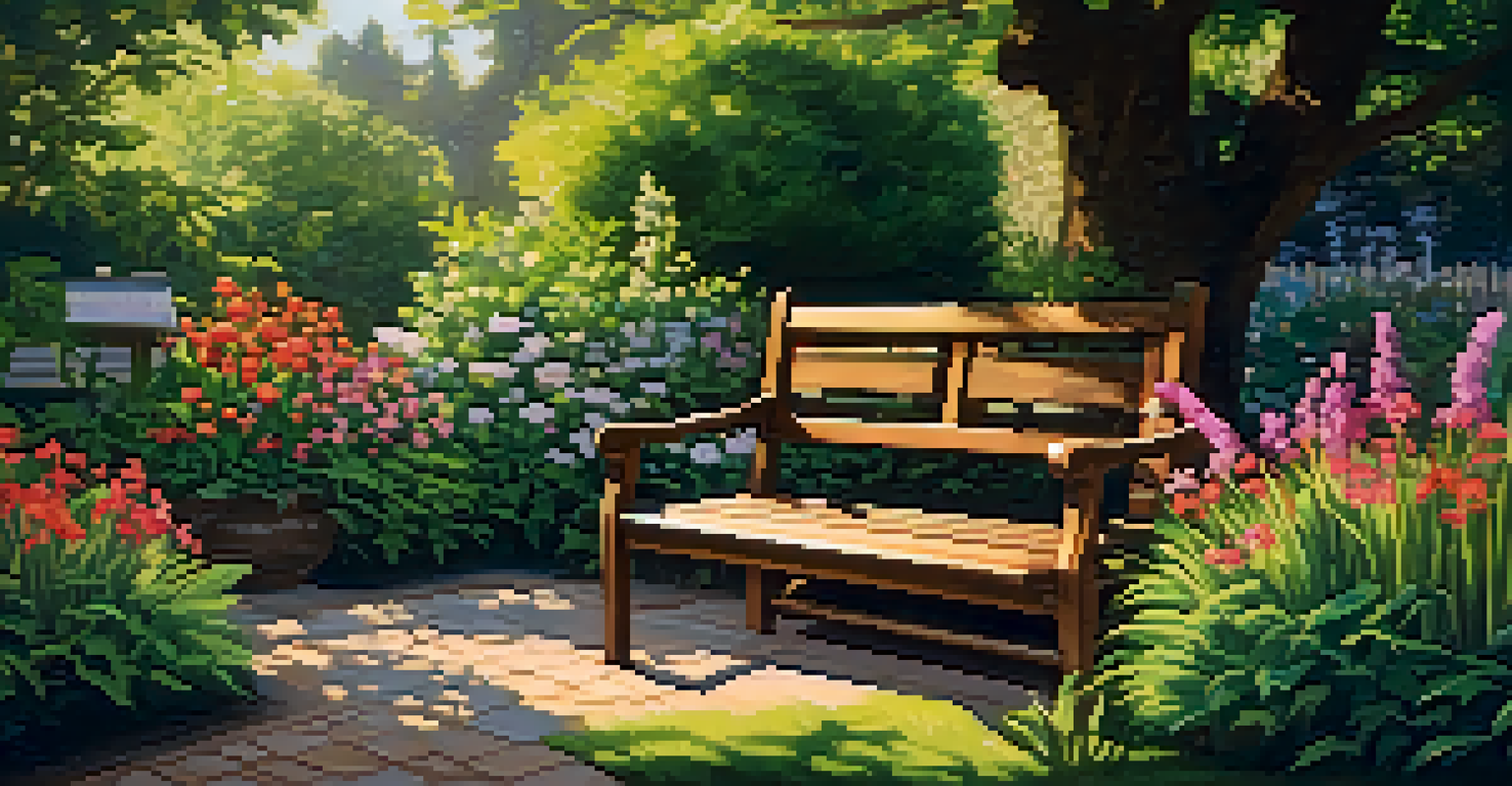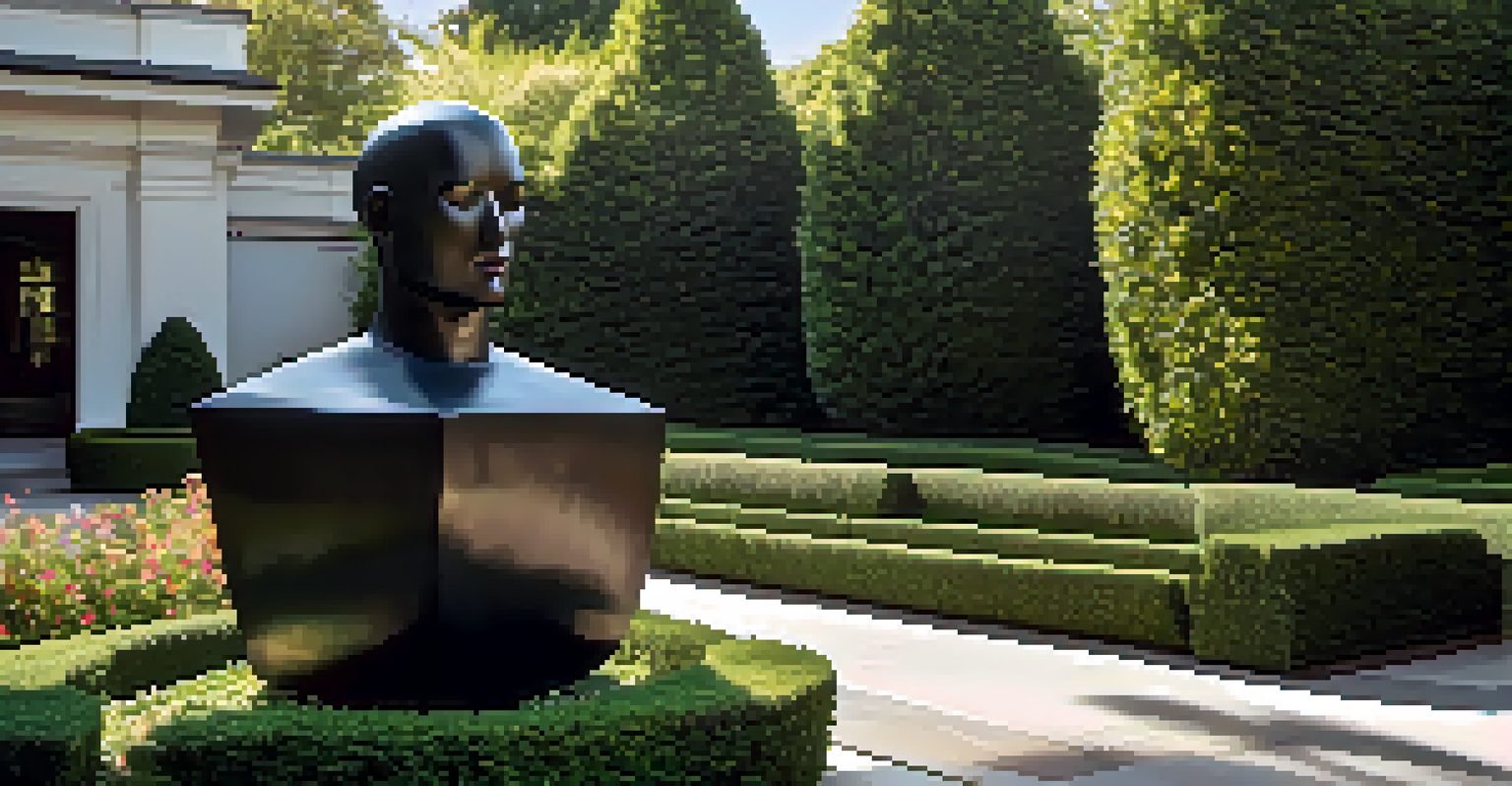Choosing the Right Materials for Carved Landscaping Elements

Understanding the Importance of Material Selection
Choosing the right materials for carved landscaping elements is crucial. The materials you select will not only affect the aesthetic appeal but also the durability of your projects. For instance, a beautifully carved stone can elevate your garden but may require more maintenance than wood.
The environment is where we all meet; where we all have a mutual interest; it is the one thing all of us share.
Moreover, different materials can evoke distinct moods in your landscape. A rustic wooden bench offers a cozy feel, while a sleek granite sculpture might bring a modern touch. Understanding how various materials contribute to the overall vibe of your space is key.
Ultimately, the right choice can ensure your carvings enhance your landscape for years to come. So, take the time to explore your options before diving into your next project!
Popular Materials for Carved Landscaping Elements
When it comes to carved landscaping elements, several materials stand out. Wood, stone, metal, and concrete are among the most commonly used. Each of these materials has unique characteristics that can influence your design decisions.

For example, wood is often favored for its warmth and versatility. It can be carved into intricate designs, making it perfect for decorative features like trellises or garden benches. On the other hand, stone offers a rugged, enduring quality that can withstand the elements, making it ideal for long-lasting sculptures.
Material Choice Affects Durability
Selecting the right materials significantly influences both the aesthetic appeal and longevity of carved landscaping elements.
Metal carvings can add a contemporary flair, while concrete can be molded into various shapes, allowing for more creative freedom. Understanding these materials will help you align your choices with your vision.
Evaluating Durability and Maintenance Needs
Durability is a key factor when selecting materials for outdoor landscaping elements. Different materials have varying degrees of resistance to weather conditions, pests, and wear over time. For example, while softwoods like pine may look beautiful, they may not hold up well against moisture and insects.
The best time to plant a tree was twenty years ago. The second best time is now.
In contrast, hardwoods like teak or oak are more durable and can withstand the elements better. Similarly, stone and metal tend to require less maintenance, making them suitable for those who prefer low-effort landscaping.
Ultimately, consider your local climate and the specific conditions your carved elements will face. This awareness will guide you in choosing materials that will last and require minimal upkeep.
Aesthetic Considerations for Your Landscape
Aesthetic appeal plays a significant role in material selection for carved landscaping elements. The color, texture, and finish of the material can dramatically influence the overall look of your garden. For instance, a smooth, polished stone contrasts beautifully with rougher, natural surfaces.
Additionally, think about how the materials you choose will complement existing elements in your landscape. If you have a rustic garden, natural wood may blend seamlessly, whereas a modern space might benefit from sleek metal finishes.
Consider Budget and Maintenance
It's essential to align your material choices with your budget while factoring in long-term maintenance costs for sustainability.
Always remember that the materials you select should harmonize with your landscaping theme. This careful consideration will create a cohesive and visually pleasing environment.
Environmental Impact of Your Material Choices
In today’s world, being mindful of the environment is essential, even in landscaping. The materials you choose can have a significant impact on the ecosystem. For instance, opting for sustainably sourced wood or recycled materials can reduce your carbon footprint.
Additionally, consider how the production and disposal of materials affect the environment. Materials that are non-biodegradable or require high energy for production may have a greater negative impact.
By prioritizing eco-friendly options, you not only beautify your space but also contribute positively to the planet. It's a win-win situation for both your landscape and the environment!
Budgeting for Carved Landscaping Materials
Budget considerations are vital when selecting materials for your carved landscaping elements. Different materials come with varying price points, and it’s important to align your choices with your budget. For example, while exotic hardwoods may be stunning, they can also be significantly more expensive than local softwoods.
Additionally, don’t forget to account for maintenance costs over time. Some materials may be cheaper upfront but require more upkeep, which can add to your overall expenses. On the other hand, investing in durable materials can save you money in the long run.
Consult Experts for Best Results
Engaging with landscape professionals can provide tailored insights and recommendations, ensuring your selections meet your vision and local conditions.
Planning your budget carefully will help you make informed decisions that balance aesthetics and financial considerations.
Consulting with Experts for Material Selection
Sometimes, the best way to choose the right materials is to consult with experts in the field. Landscape architects and designers can offer valuable insights based on their experience with various materials. They can help you understand how different materials perform in your specific climate and landscape.
Moreover, professionals can provide recommendations tailored to your vision and budget. They may also be aware of local suppliers who can offer high-quality materials at competitive prices.

Reaching out for expert advice can save you time and prevent costly mistakes. It's a smart step that ensures your carved elements turn out exactly as you imagined.